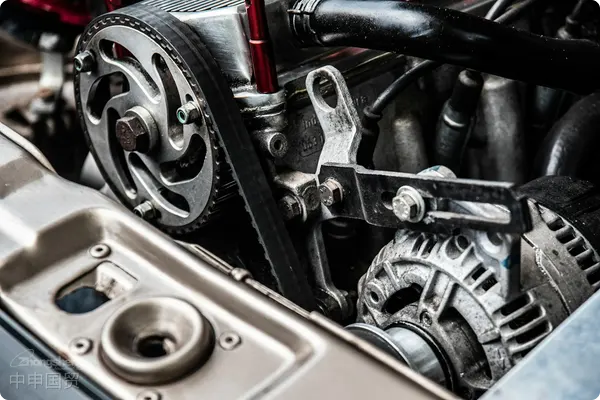- Shanghai Zhongshen International Trade Co., Ltd. - Two decades of trade agency expertise.
- Service Hotline: 139 1787 2118

Windshield wiper armAutomotive partsComprehensive Analysis of Import Procedures and the Value of Professional Agency Services
Author: Senior Client Manager, International Trade Services Department (20 years of experience)
I. Industry Background and Market Trends
The global automotive aftermarket is projected to exceed $1.5 trillion by 2025, with wiper arms—a critical component of vehicle safety systems—maintaining a compound annual growth rate (CAGR) of 8.2% in import demand. China, Germany, and Mexico are the primary production hubs, while emerging markets such as the Middle East, Southeast Asia, and Africa rely on imports for over 60% of their wiper arm supply due to weak local supply chains.
II. Analysis of Core Pain Points in Wiper Arm Imports
With 20 years of agency service experience, we have summarized the four major challenges commonly faced by importers:
1.Technical Standard Barriers: Compliance risks with regulations such as EU ECE R104 and US SAE J903 certification
2.Logistics loss control: The damage rate of goods caused by substandard rust-proof packaging of metal parts is as high as 12%.
3.Tariff Cost Optimization: The difference in tax rates caused by different HS codes (such as 8708.50/8708.99) ranges from 7% to 15%.
4.Supply chain lead time control: The average delay period caused by port inspection reaches 7-14 working days.
III. ProfessionalismImport RepresentationEnd-to-end service solution
(Using the case model of an annual purchase of 2 million pieces by a Middle Eastern customer)
Phase 1: Preliminary Compliance Preparation
- Product pre-classification: Confirm the HS code through 3D drawing analysis (recommended to use 8708.50.0000).
- Certification Pre-qualification: Provide a salt spray test report issued by a CNAS-accredited laboratory (ASTM B117 standard).
- Supplier background check: Verify the effectiveness of the OEM manufacturer's IATF 16949 system.
Phase Two:International LogisticsOptimize
- Rust Prevention Packaging Solution: VCI Vapor Corrosion Inhibitor Film + Desiccant Dual Protection, Reducing Cargo Damage to Below 2%
- Transport Mode Selection: For the Middle East route, the "Qingdao Port-Jebel Ali Port" sea-rail intermodal solution is recommended, achieving an 18% cost reduction.
- Insurance Policy: Covering all risks during transportation under the Institute Cargo Clauses (ICC Clause A).
Phase 3: Intelligent Clearance Management
- Pre-classification Ruling: Obtain the Customs Commodity Pre-classification Opinion in advance (reducing customs clearance time by an average of 3 days).
- Tariff Planning: Utilizing the China-UAE Free Trade Agreement (CEPA) to Secure a 5% Tariff Reduction
- AEO Fast Track Clearance: 98% of goods exempt from unpacking inspection through Advanced Certification Enterprise qualification.
Phase 4: Localized Service Expansion
- Bonded Warehousing: Establishing a Distribution Center in JAFZA Free Zone, Dubai, to Achieve 72-Hour Emergency Replenishment
- Quality Traceability: The blockchain system records the full lifecycle data from steel mill raw materials to terminal installation.
- After-sales support: Establish standardized RMA processes to handle quality disputes.
IV. Five Value-Added Benefits of Choosing a Professional Agency
1.Cost-saving matrix: Achieve a 23% reduction in overall costs through VMI inventory management + batch declaration mode.
2.Risk management system: Covering 12 risk dimensions including Hedging and Force Majeure clauses
3.Data Decision Support: Provide monthly import analysis reports (including customs clearance time, tax rate fluctuations, and market demand forecasts).
4.Technical Upgrade Service: Assist in integrating the ERP system with the Customs Single Window.
5.Sustainable development: Compliant with the WCO SAFE Framework of Standards to Secure and Facilitate Global Trade
V. Industry Outlook and Strategic Recommendations
With the EU's new regulations in 2024 including wiper arms in Annex XVII of the REACH Regulation, it is recommended that importers:
- Deploy SCIP notifications (Substances of Concern In Products) in advance
- Establish an SVHC (Substances of Very High Concern) testing mechanism (with a focus on monitoring lead and cadmium content).
- ExploreCross-border E-commerceB2B model (such as expanding the end-user repair market through Amazon Business)
Conclusion
Against the backdrop of global supply chain restructuring, professional import agency services have evolved from mere "customs clearance executors" to "strategic partners." Selecting service providers with specialized qualifications in automotive components (such as ACCC Automotive Supply Chain Certification) and a global customs network (recommended coverage of at least 15 major ports) will be crucial for wiper arm importers to build competitive barriers.
Related Recommendations
? 2025. All Rights Reserved. Shanghai ICP No. 2023007705-2  PSB Record: Shanghai No.31011502009912
PSB Record: Shanghai No.31011502009912









